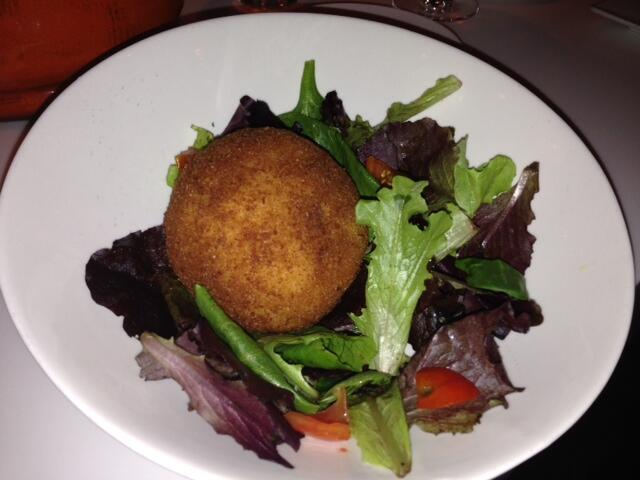
Three or four times a year I get this call. My phone lights up and the Robin Hood theme song starts playing. There it is. Patrick Harrington is calling. I know what he’s about to tell me. Tina, who growing up acted as my grandmother, is making arancini. The sicilian woman in her 70’s only does this every so often but no matter what my plans are for the night, I cancel them. Arancini never take a backseat in my gastronomical priorities.
Arancini is italian for little oranges but that is far from what this dish actually is. Arancini are small rice balls filled with either ragu, tomato sauce, peas or my favorite mozzarella. Then they are coated in breadcrumbs and fried. The “rice” here is more accurately risotto and is traditionally made with saffron giving the orange bulbs their color and flavor. The finished product is an orangey brown fried to perfection ball of cheesy risotto heaven that resembles a small orange.
Arancini date back to the 10th century and with their phenomenal taste it is no wonder they have stood the test of time and are still a popular finger food amongst Italians. During the Saracen domination the roots of arancini began to take hold in Italian soil. The arab influence brought rice into Sicily, by improving their irrigation systems to allow for rice to be grown and bringing the grain and spices like saffron into the cuisine. The neanderthal of arancini were just rice balls made with meat or vegetables with condiments on the side and eaten by hand. Some centuries later Frederick the II is credited with having the brilliant idea of breading and frying the rice balls. This made arancini last longer and more portable allowing them to bring arancini on trips or hunts. Though hunting is less popular in southern Italy now than it was in the 12th century arancini can be seen sold in the streets and being eaten by pedestrians on their way to and from work.
Arancini come in many different varieties. My nonna (grandmother) makes it with a spinach parmesan risotto and fills it with mozzarella. Arancini leaves a lot of room for culinary creativity; it can done with any type of risotto and filling. A less common version of arancini can be eaten on December 13th, the feast day for Saint Lucia (saint of the blind), when arancini are made with a sweet chocolate filling. The shape of arancini can also vary. The most common shape of arancini is the round ball from west Sicily and the lesser known cone shaped arancini come from the east and are supposed to resemble the form of Mount Etna.
Arancini, like many Italian treats, are a sly way to revamp leftovers. Back at Tina’s house after our “Ciao”’s and double kisses she tells me how she made too much risotto the night before and so she decided to make arancini. Arancini is a perfect revival for leftover risotto and depending on your preference you can throw in leftover sauce, meat or fish as well. The result is a meal just as fantastic as the one you had before without the feeling of “Oh I’m eating this again”. As I bite into a freshly fried arancini the mozzarella creates a stringy bridge from my lips to the center of the risotto ball, I hear the slight crunch of the breaded coating and I remember why I wait for this phone call.
By Editor Corinne Nobili
This site uses Google reCAPTCHA V3. Read the privacy policy and terms of service for more information.